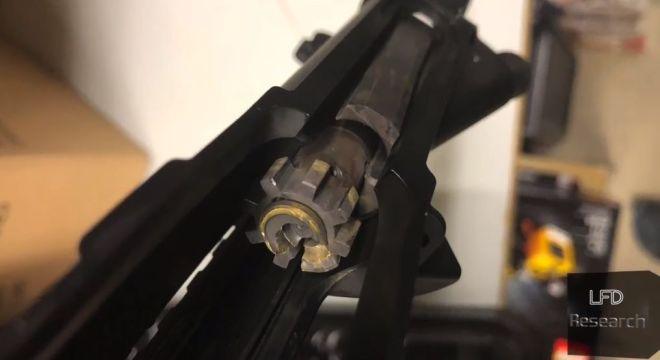Lazy D
Well-Known Member
Oh yeah, seen this happen a few times. Ultimately what happens is the case ruptures right where the extractor sits. When this happens the extractor peels back and locks the bolt into the barrel and extension. The bullet still goes down range and upon passing the gas port 61,000 PSI (5.56 ammo) of gas vents into the carrier. Now is where the kaboom happens. The bolt is locked up and the carrier can not move to the rear and bleed off the gas. Pressure builds and the carrier can't hold it. It always blows out the bottom. If you look at a carrier the thinnest part is at 5 & 7 o'clock were it's made to clear the magazine lips. All the pressure goes right through the mag well. This is the biggest sale point for piston guns. It only happens on gas impingement guns.

